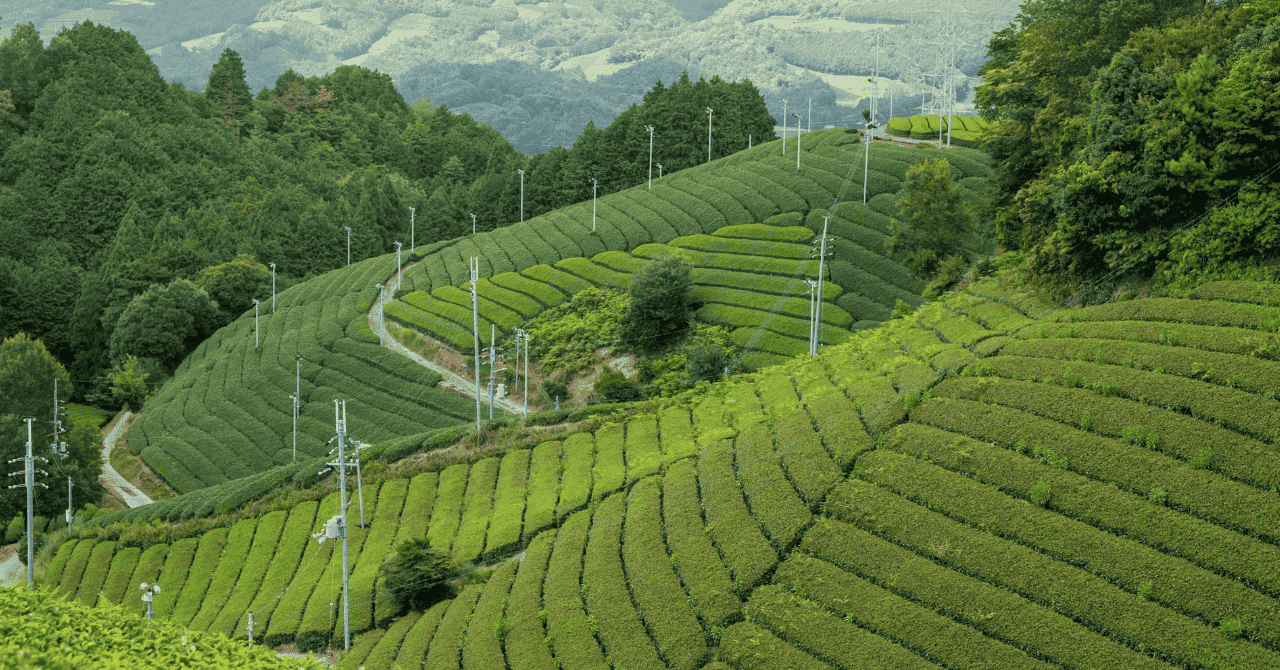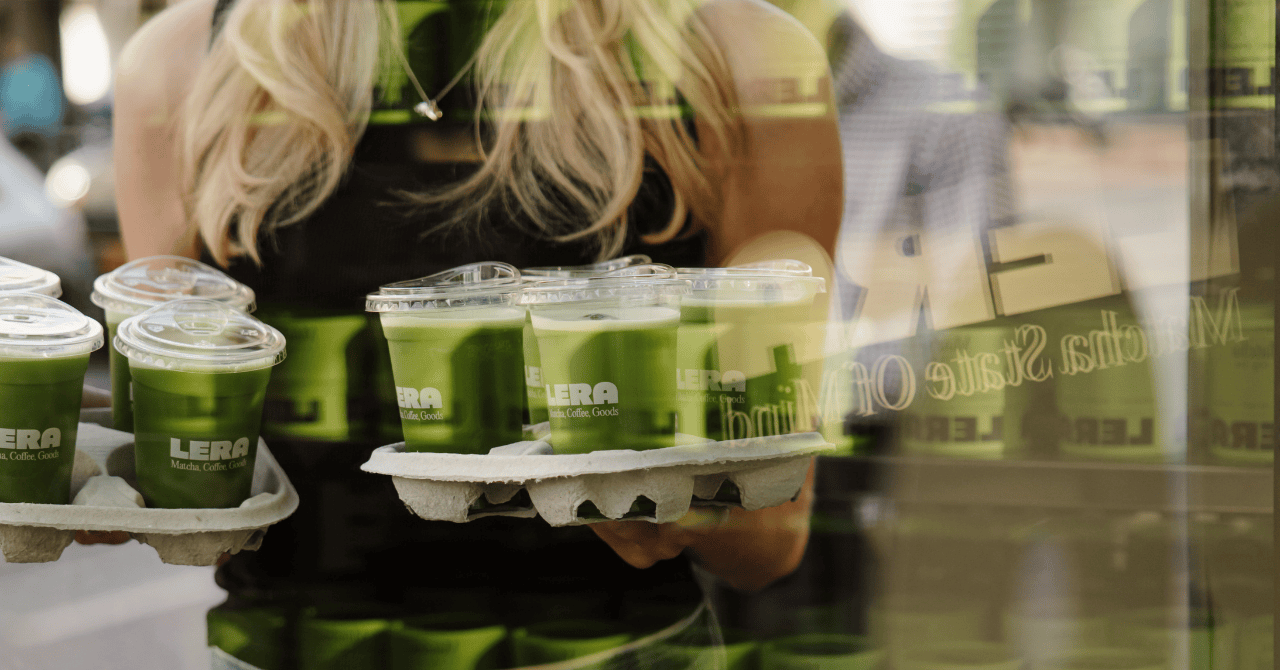The Taste of Matcha Regions

The Taste of Matcha Regions
The region and the cultivar shape everything you taste — color, aroma, texture, finish. Each area in Japan leaves its own trace: softer or sharper, creamier or clean. The powder carries the imprint of its soil and season. The altitude, the air, the way shading is managed before harvest — all of it defines the cup. Good matcha isn’t just bright. It’s balanced.
Each region tells a slightly different story. One of the climate and character. Knowing where it comes from helps you understand what you like, and why.
Below, five matcha regions in Japan, and the profiles they bring to the bowl.
Uji, Kyoto - The Classic
Uji, just south of Kyoto, is considered the birthplace of Japanese matcha. Tea has been cultivated here since the 13th century, when Zen monks first planted seeds along the Uji and Kizu rivers. By the 15th century, Uji tea had become the choice of imperial courts, valued for its balance and depth.
The region’s terrain and climate still define its taste. Cool mornings, mist from the rivers, and mineral-rich soil create steady humidity and slow growth. These conditions produce leaves high in L-theanine and vivid color — the foundation of Uji’s rich umami and natural sweetness.
Uji’s producers refined the shading method that remains the standard today: several weeks under cover before harvest to concentrate flavor and soften bitterness. After picking, the leaves are steamed to preserve aroma and stone-milled into a fine, even powder. Precision here isn’t a trend, it’s just how things are done.
Cultivars such as Samidori, Uji Hikari, and Gokō dominate the region.
Samidori is smooth and rounded.
Uji Hikari adds fragrance.
Gokō gives weight and umami.
Together, they form the profile that has come to define ceremonial matcha — balanced, creamy, and mellow.

Yame, Fukuoka - The Elegant
Yame, in southern Fukuoka, is known for teas that balance sweetness and depth. The region’s rolling hills, cool nights, and morning fog create slow, steady growth — ideal for leaves high in umami.
Yame’s reputation began with gyokuro, Japan’s highest-grade shaded tea. The same climate now produces matcha with similar richness: smooth, mellow, naturally sweet. Many growers still use traditional honzu shading (straw instead of synthetic netting) to control light and temperature with precision.
Matcha from Yame tastes broader than Kyoto’s, with less sharpness and a longer, softer finish. Its color is deep emerald; its texture, creamy and dense. The flavor lingers — sweet first, then savory — with almost no bitterness.
Cultivars such as Saemidori and Okumidori are common, chosen for their gentle aroma and balanced tone. Each harvest feels confident, unhurried — as if Yame has nothing left to prove.

Nishio, Aichi - The Balanced
Nishio, in central Aichi Prefecture, has been cultivating tea for over 800 years — but its focus is different. More than ninety percent of the region’s fields are dedicated to matcha. Efficiency here isn’t a shortcut; it’s an art form.
The Mikawa Plateau provides fertile soil and mild weather, while the nearby Yahagi River keeps the air humid enough for slow, balanced growth. The result is matcha that’s dependable, even-tempered, and vivid in color.
Nishio matcha is known for balance — gentle sweetness, mild bitterness, clean finish. Its flavor sits between Uji’s layered depth and Kagoshima’s brighter energy, making it versatile for both usucha and lattes.
Common cultivars include Okumidori, Yabukita, and Kanayamidori, often blended to maintain consistency across harvests. The grind is typically fine and stable, producing dense foam and a smooth mouthfeel.
Structured, steady, clear — Nishio shows how precision can scale.
Shizuoka - The Bright
Shizuoka is Japan’s largest tea-producing region, known more for sencha than matcha — yet its scale and experience still shape much of Japan’s green-tea culture. The terrain spans mountains and plains, with misty mornings and well-drained volcanic soil that give the tea a clean, brisk character.
Only a small part of Shizuoka’s harvest becomes matcha, often using cultivars such as Yabukita, Okumidori, and Saemidori. The result is a lighter, more aromatic profile — grassy, fresh, and slightly astringent.
Compared to Uji or Yame, Shizuoka matcha feels leaner, less creamy, more tea-forward. It’s bright in flavor, quick in finish, and vivid in color — a reminder that not all matcha aims for richness; some simply aim for clarity.
Kagoshima, Kyushu - The Bold
At Japan’s southern tip, Kagoshima grows more tea than almost any other region. The fields spread across volcanic slopes, enriched by mineral soil and steady rain. Warm days and cool nights encourage quick, even growth, producing leaves high in color and sweetness.
Kagoshima matcha is fresh and approachable — bright green, low in bitterness, gently sweet. The flavor is clean and lightly vegetal, with a smooth, rounded finish.
Cultivars such as Saemidori, Okumidori, and Yabukita are widely grown. Saemidori gives color and clarity, Okumidori adds depth, Yabukita lifts the aroma. Together they create a matcha that feels consistent, balanced, and clear.

Cultivar Notes
Cultivar tells you the leaf’s DNA — whether it leans toward cream, snap, or brightness. It doesn’t override region; it refines it. Use cultivar labels as guides, not instruction.
Choosing Based on Mood
Want plush, smooth, full? Try Uji or Yame.
Prefer something fresher, lighter, more defined? Try Shizuoka or Kagoshima
Move between them — tasting is how you learn what feels right.
The best matcha is the one you want to return to.
LERA Approach
We source with region in mind, not trend. That means rotating profiles, tasting rigorously, always anchoring to how the cup feels. When a tin makes us pause on the second sip — that’s when it earns a place.
So when you pick from our matcha line, know that each one was chosen by taste. Nothing else. Taste the region. Taste your next favorite.

.svg)
